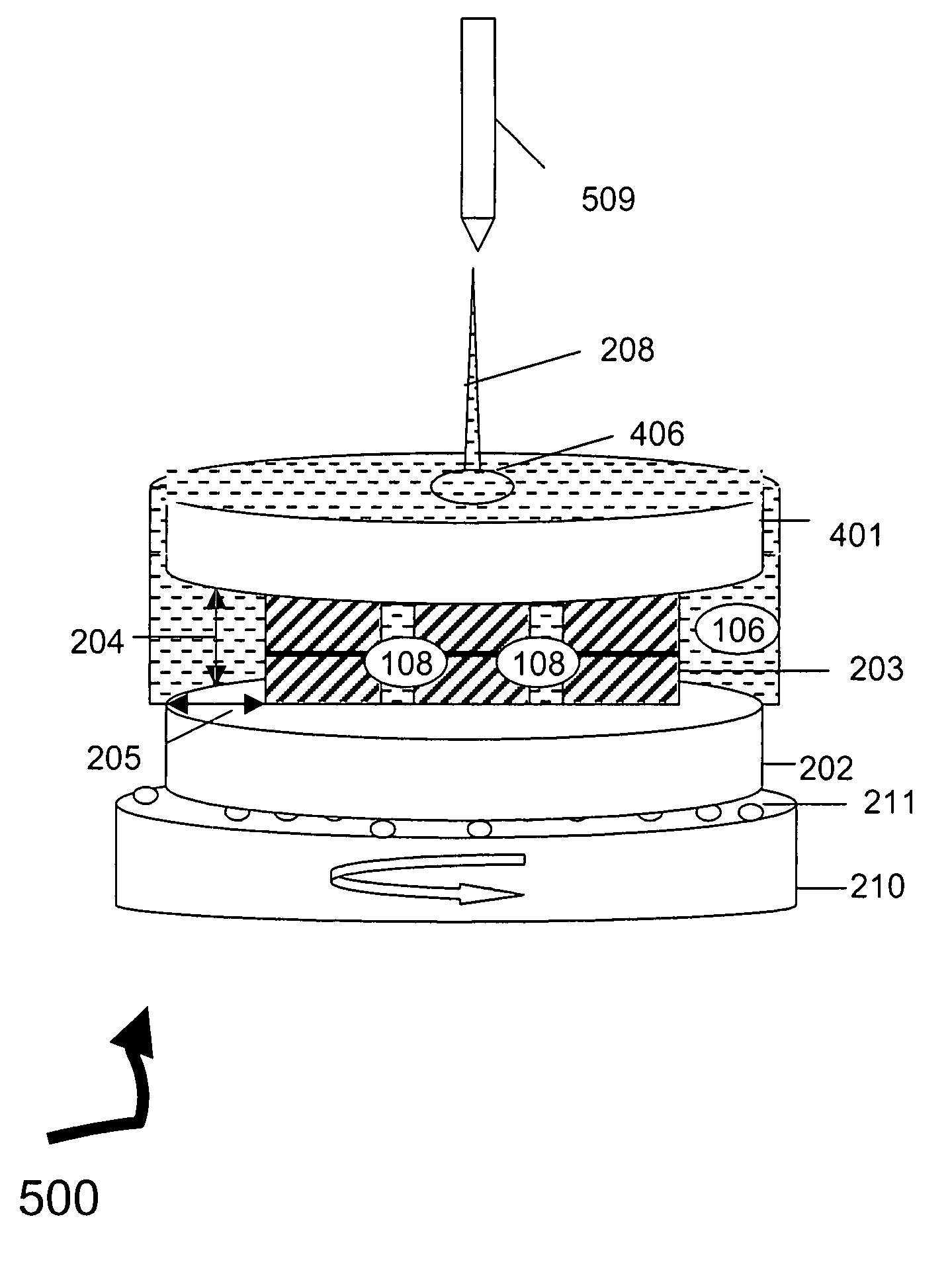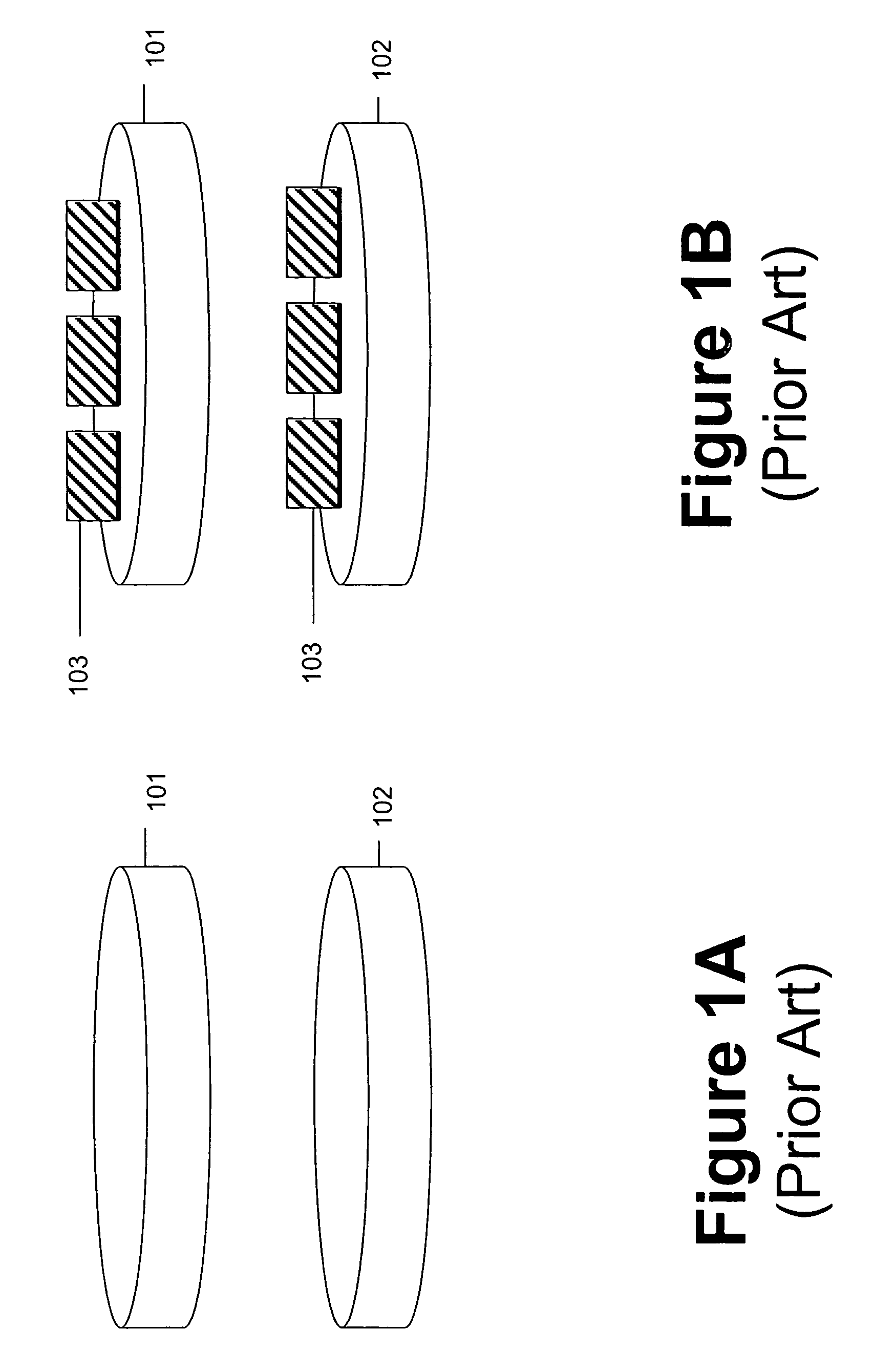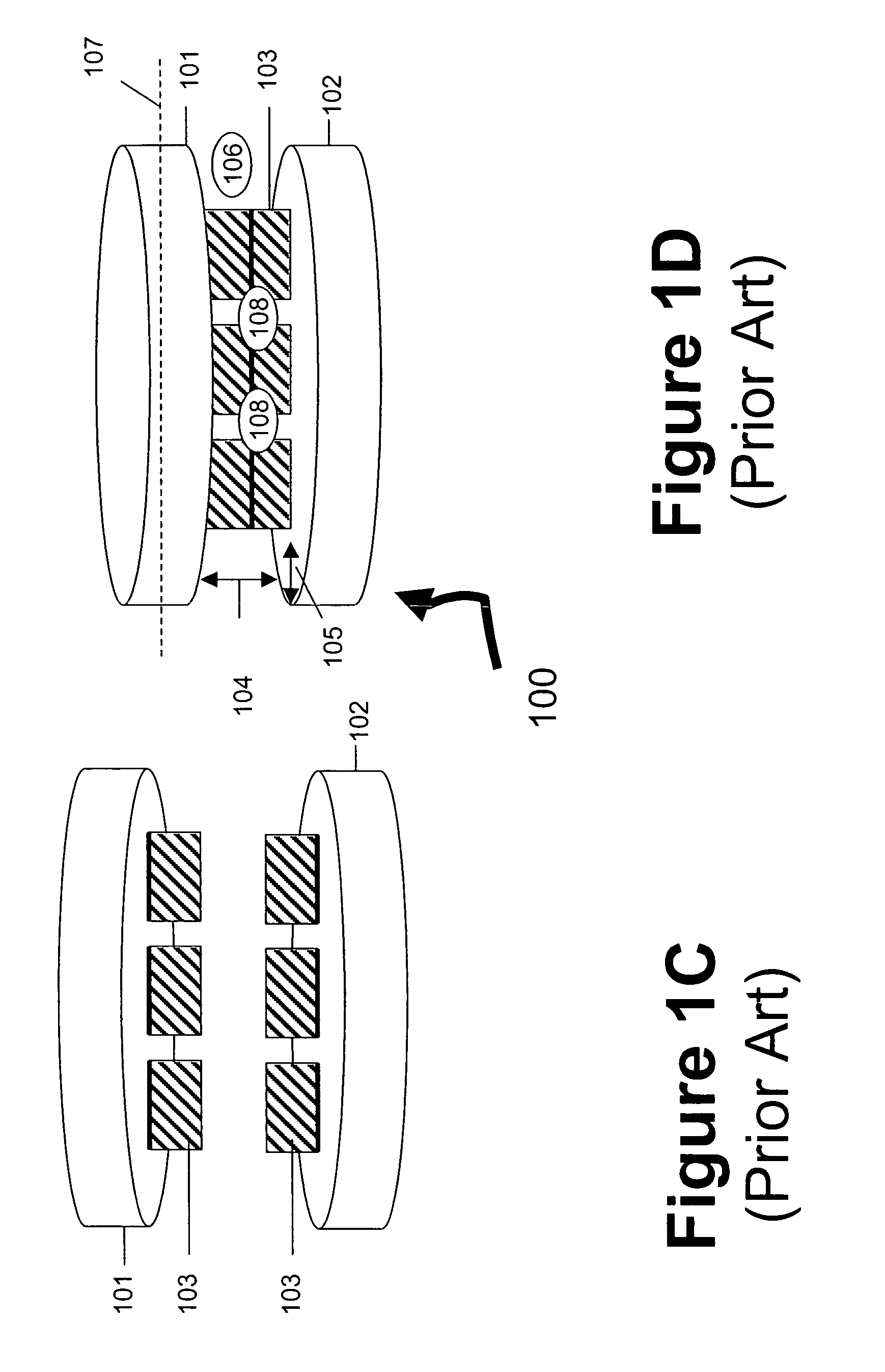Method to fill the gap between coupled wafers
a technology of coupled wafers and coupled plates, applied in the direction of semiconductor devices, semiconductor/solid-state device details, electrical devices, etc., can solve the problems of mechanical stresses in the unsupported portions of the wafer being thinned
- Summary
- Abstract
- Description
- Claims
- Application Information
AI Technical Summary
Benefits of technology
Problems solved by technology
Method used
Image
Examples
Embodiment Construction
[0019]Embodiments of the present invention are three dimensional integrated circuit devices having a gap fill and their methods of formation. In the following description numerous specific details have been set forth in order to provide a thorough understanding of the present invention. In other instances, well-known semiconductor fabrication processes and techniques have not been set forth in particular detail in order to avoid unnecessarily obscuring the present invention.
[0020]Embodiments of the present invention are a method for applying a material on a coupled wafer pair in order to fill a gap between wafers of the coupled wafer pair. Embodiments of the invention include applying a material through a hole within one of the wafers of the coupled wafer pair and creating a pressure differential to help the material flow between the coupled wafers. Embodiments of the invention include spinning a coupled wafer pair, applying a material on the top of or directly in a gap between the ...
PUM
 Login to View More
Login to View More Abstract
Description
Claims
Application Information
 Login to View More
Login to View More - R&D
- Intellectual Property
- Life Sciences
- Materials
- Tech Scout
- Unparalleled Data Quality
- Higher Quality Content
- 60% Fewer Hallucinations
Browse by: Latest US Patents, China's latest patents, Technical Efficacy Thesaurus, Application Domain, Technology Topic, Popular Technical Reports.
© 2025 PatSnap. All rights reserved.Legal|Privacy policy|Modern Slavery Act Transparency Statement|Sitemap|About US| Contact US: help@patsnap.com



